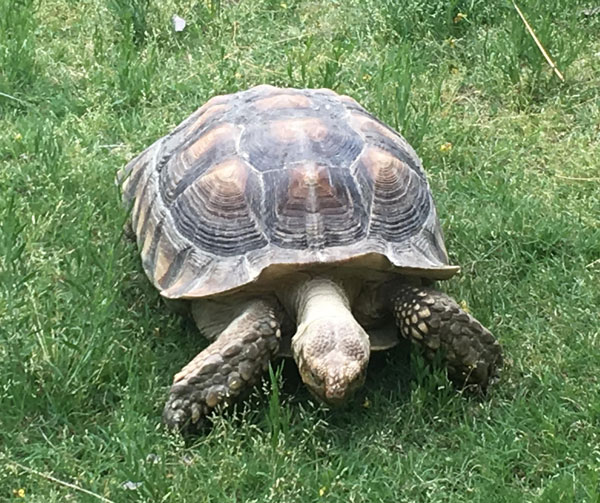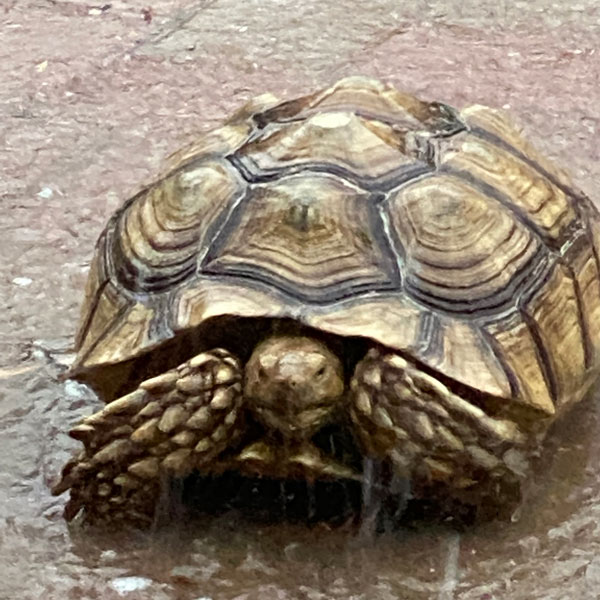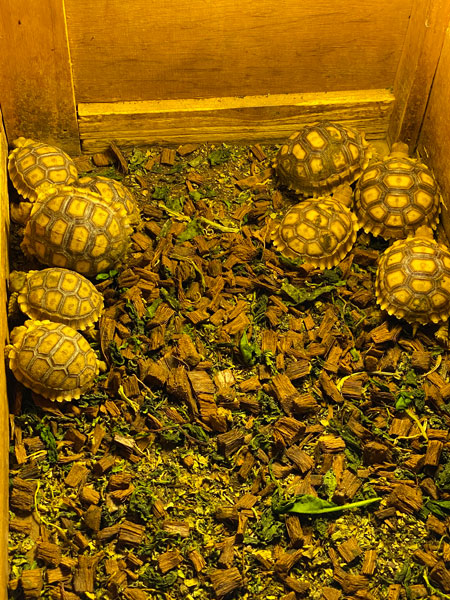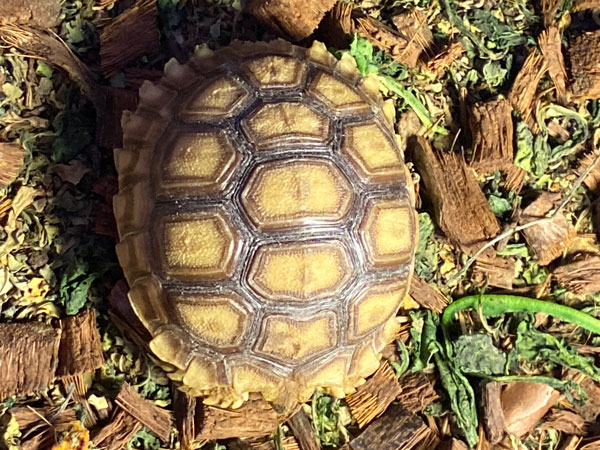Caring for my diverse group of tortoises, which includes four different species, is a constant challenge. I make a conscious effort to keep the sexes apart, as I don’t want to deal with the responsibility of finding homes for their offspring. The winter months bring another set of challenges, as I need to bring most of them inside to protect them from the cold. Despite these challenges, I am committed to their well-being. All my tortoises, except two, are reasonably sized, smaller than a dinner plate.
However, I have two sulcata or spurred tortoises (Centrochelys sulcata). This species is the third-largest tortoise in the world and is very popular in the pet trade.
When I moved to Tucson from New Jersey, I brought the male, Duke, with me. He lives in the “reptile” room with paneling that he can’t scrape through. I can’t leave him outside because the desert sand and sun irritate his eyes, making them swell shut. Once back inside, the eyes quickly recover. He does spend a lot of time moving the other enclosures around in the room. All the enclosures have wheels so he doesn’t knock them over, which he seems to enjoy doing.

Cantata’s Arrival
A few years ago, my neighbors were asked if they knew of anyone who would take a sulcata tortoise that was left behind when homeowners moved out. I took her in since Duke had gotten too big for me to use in my reptile talks. She was small enough then to hang out in the central part of the house during the winter. In the spring, she would head out to the backyard and dig her impressive underground dens. Yet, when winter came, she needed to go indoors. Sulcatas cannot withstand old temperatures. She spent the winter scraping my walls and bashing my furniture. Desperate, I put her in the reptile room with Duke, hoping they would brumate the winter away companionly. To my surprise, they spent the next four hours mating nonstop. Duke honked like a goose while doing the deed. I couldn’t take it and pulled her out again, lining my walls with cardboard. Sadly, scraped walls still occurred.

Baby Boom
Fast forward to this past fall. All the desert tortoises are happily cavorting in the backyard, digging dens, grazing on grass, and collard greens. Suddenly, I found baby tortoises in the yard, driveway, and neighbor’s house! Were they native Sonoran Desert tortoises or the offspring of my family members? I didn’t know what species they were. An online search showed that baby tortoises look a lot alike. Consultation with an expert determined they were, in fact, sulcatas. In speaking with him, I found out that sulcatas are sperm storers. Cantata will be able to use Duke’s sperm for up to 4 years! She will lay multiple clutches as well. Oh, goody.
As of this writing, I have found 18 babies. I have them in an enclosure indoors. Sulcatas survive very well in the desert as an invasive species, so I need them to be contained and cannot release them into the environment. Being so much larger than the native Sonoran Desert tortoises (Gopherus morafkai), they easily outcompete the locals.
The baby tortoises are adorable. I’m keeping one of them for my talks. Cantata is rapidly approaching 100 lbs. I’ll need a smaller one to carry around.
Fortunately, I found a responsible tortoise person to take my babies. I am a bit disconcerted that next summer and the summer after and the summer after that, more little tortoises will be appearing in my yard. Anticipation…


Notice the size differences. I suspect the larger ones were in one clutch and the smaller ones in the second clutch. I’ve found a few late-comers who may have been in a third. I have no idea where the nests were. Cantata is not talking.

I am intrigued by the distances walked by the babies. Three of them made it out of the backyard, across my driveway, the street, and the neighbor’s driveway. One of the last ones found came to the front door! Truly amazing.
If you enjoyed the tales of Duke and Cantata, be sure to check out my tortoise picture books!